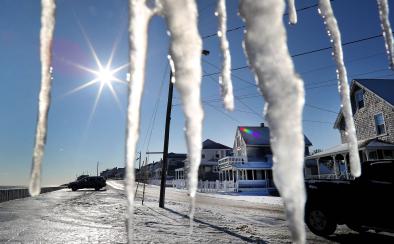Science Source
A stratospheric pathway linking a colder Siberia to Barents-Kara Sea sea ice loss
- States that previous studies have extensively investigated the impact of Arctic sea ice anomalies on the midlatitude circulation and associated surface climate in winter
- States that there is an ongoing scientific debate regarding whether and how sea ice retreat results in the observed cold anomaly over the adjacent continents
- Presents a robust “cold Siberia” pattern in the winter following sea ice loss over the Barents-Kara seas in late autumn in an advanced atmospheric general circulation model, with a well-resolved stratosphere
- Finds — using additional targeted experiments — that the stratospheric response to sea ice forcing is crucial in the development of cold conditions over Siberia, indicating the dominant role of the stratospheric pathway compared with the direct response within the troposphere
- Finds, in particular, that the downward influence of the stratospheric circulation anomaly significantly intensifies the ridge near the Ural Mountains and the trough over East Asia; the persistently intensified ridge and trough favor more frequent cold air outbreaks and colder winters over Siberia
Related Content
Science Source
| Geophysical Research Letters
Observations reveal external driver for Arctic sea‐ice retreat
Dirk Notz, Jochem Marotzke
Science Source
| Nature Communications
Warm Arctic episodes linked with increased frequency of extreme winter weather in the United States
Judah Cohen, Karl Pfeiffer, Jennifer A. Francis
Headline

Jan 17, 2018 | Weather Underground | Category 6
Extreme Temperature Workout: The Gyrations of January 2018
Science Source
| Nature Communications
Recent enhanced high-summer North Atlantic Jet variability emerges from three-century context
V. Trouet, F. Babst & M. Meko


